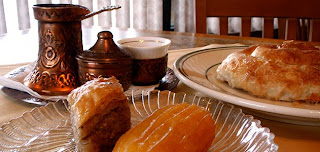Bosnian Culture, Traditions
The
long conflict that has engulfed Bosnia-Herzegovina and dissolved or
forced to emigrate internal communities could not adversely affect the
distribution and maintenance of certain traditions, related, for
example, music or dance. At one time, the heritage of folk dances of
Bosnia and Herzegovina was the richest and perhaps the least known of
the former Yugoslavia, and currently, the repertoire is kept alive by
folk groups that in socialist Yugoslavia enjoyed a rich state subsidies,
and who have crossed a period of severe economic uncertainty in the
years following the war. Given the divided ethnic composition of the
population of Bosnia and Herzegovina, the main religious festivals are
both Catholic and Orthodox, and Muslim: the Bajram stand between them
and Kurban Bajram, a three-day period that is repeated twice a year
according to the lunar calendar, during which schools are closed, we
organize visits to all family members and preparing the baklava, sweet
typical of Turkish and Balkan (a pastry filled and covered with sugar
syrup and honey). Unfortunately, the spirit of religious tolerance that
once brought all Bosnians to celebrate the religious festivals of
different communities is dissolved during the war years, as the
destroyed mosques, synagogues and churches targeted ethnic hatred. Was
maintained, but this tends to disappear, the so-called Bosanska Korrida,
which sees a large crowd watching a fight between bulls. § The kitchen
is similar to that of other Balkan countries, rich oriental influences
arrived with the Ottoman rule: they are ubiquitous kebab, the bosanski
lonac, dish similar to a stew in which the meat is mutton mixed with
cabbage and paprika The burek, a cake layered with cheese and meat, and
pida, a kind of flat bread stuffed with minced meat.

No comments:
Post a Comment